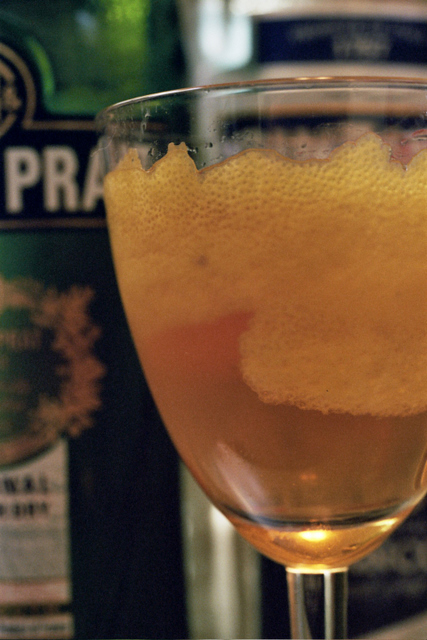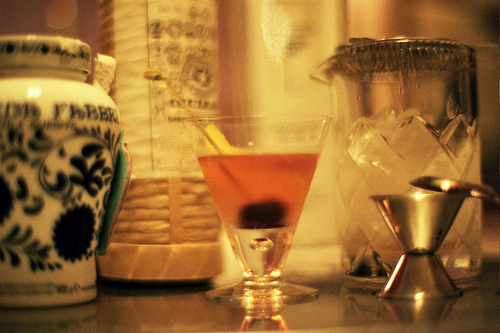First, just a reminder that this Sunday, September 26, 2010, is our monthly exercise in folly, Savoy Cocktail Book Night at Alembic Bar. If any of the cocktails on this blog have captured your fancy, stop by after 6 and allow the skilled bartenders (and me) to make them for you. It is always a fun time.
Transvaal Cocktail
3 Dashes Orange Bitters. (3 dash Angostura Orange Bitters)
1/2 Gin. (1 oz Ransom Old Tom)
1/2 Caperitif. (1 tsp Amaro Montenegro, 1 oz Dolin Blanc)
Stir well and strain into cocktail glass. (Squeeze Orange Peel over glass and drop in.)
Hm, a Fifty-Fifty type cocktail. Definitely going to want a fairly high proof, high intensity Gin to go in this one.
Hmm…
Ransom Old Tom it is! Ha! That will teach Harry Craddock to not specify what sort of Gin to use in the Cocktail!
Aromatic and Orange-tastic? The Orange peel may have been overkill with all that orange bitters.
Still, this is pretty nice, if you’re looking for some way to use up that Dolin Blanc and Old Tom.
From the Transvaal Colony Wikipedia Entry:
The Transvaal (Afrikaans, lit. beyond the Vaal River) is the name of an area of northern South Africa. Originally the bulk of the independent Boer South African Republic, which had existed since 1856, despite two previous attempts by the British of varying success to establish supremacy; after the Anglo-Boer War of 1899-1902 it became the Transvaal Colony, and eventually one of the founding provinces of the Union of South Africa.
As is usual with Caperitif containing cocktails, the name refers to South Africa.
This post is one in a series documenting my ongoing effort to make all of the cocktails in the Savoy Cocktail Book, starting at the first, Abbey, and ending at the last, Zed.









